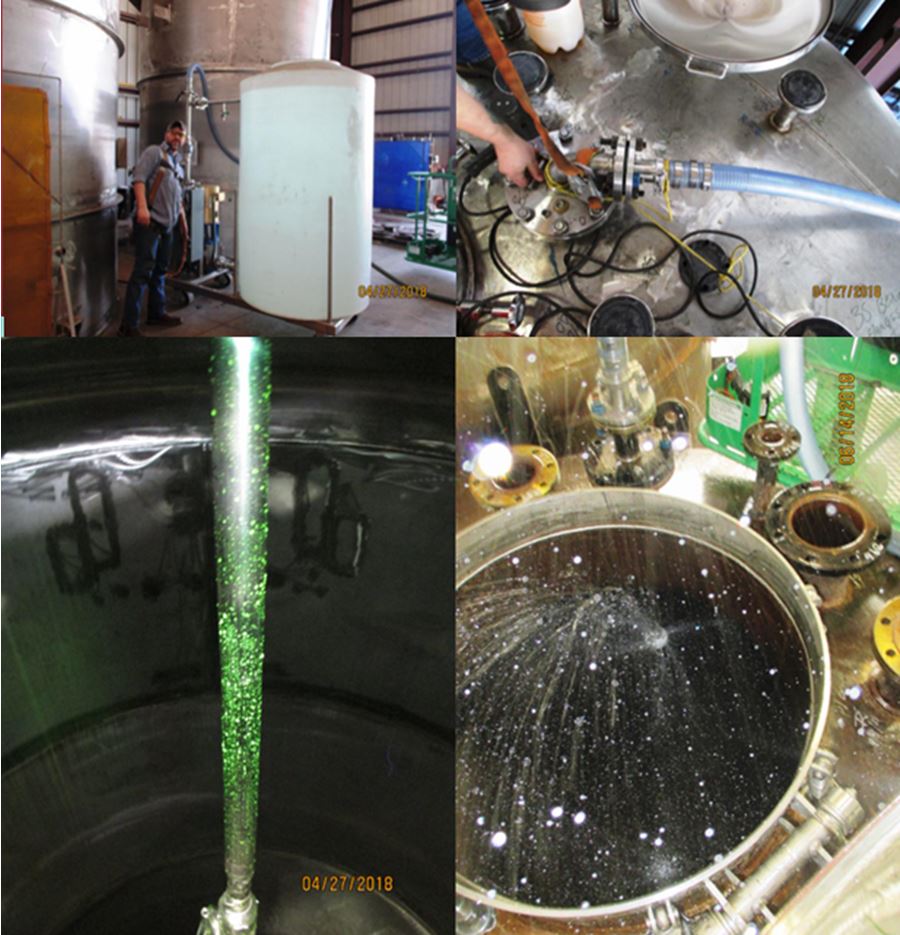Have you ever given thought to the internal cleanliness of pressure equipment?
The use of tanks and vessels can vary widely. In some facilities, a given vessel operates with a single process all the time. And, with processes like solvents and other thin, low-viscosity chemicals, the need to clean the inside of the vessel is minimal or non-existent. However, with batch processes or processes that involve high-viscosity or polymeric chemicals, large amounts of product can build up on inner surfaces and contaminate future runs in that vessel.
There are a few ways to clean the interior surfaces of vessels, including but not limited to:
- Solvent cleaning, where you run a batch of solvent through the vessel that dissolves any process left behind.
- Hydroblasting, where technicians with specialty blasting and protective equipment enter the vessel and hand-clean residues.
- Automatic or semi-automatic spray balls, which can be permanently installed in vessel nozzles or installed purely for cleaning purposes. This type equipment can be stationary or rotating and is designed to spray high-pressure streams of cleaning liquid and clean every area inside the vessel.
There are pros & cons to each of the methods listed above and they all share the challenge of separating the cleaning fluid from the process reside and dealing with environmental aspects of disposal or recycling, etc. However, the use of spray balls is often the “gold standard” when it comes to interior cleaning. When choosing the best method of cleaning, the following considerations must be evaluated:
- Level of cleaning required, where contamination with future process runs must be considered.
- Amount and type of internal surfaces to be cleaned. For instance, mixer/agitator shaft, blades, bearings; baffles; dip pipes; vanes; heating/cooling coils; shrouds; “internals” such as trays, downcomers, etc.
- Cleaning fluid(s) required and the pipe runs of each to the spray ball system.
The design of a spray ball system involves careful placement of vessel nozzles and proper length and configuration of the spray balls to ensure there are no “shadow” areas where the jets cannot reach. Often, the design of these systems is confirmed through a Riboflavin test, where the inside of the vessel is coated with riboflavin, a yellow vitamin that glows under a black light or UV-A light. The rinse system is then delivered through the spray balls in a burst-rinse method, with a timed burst followed by a timed gravity drain – repeated three times. This will help determine areas that are not properly cleaned.
One detail often overlooked revolves around future modifications to the equipment. Adding a new nozzle, dip pipe or structure inside the vessel can create an area that shadows other areas to the point where they cannot be properly cleaned.
Clearly, it is crucial to consider all these factors when designing a cleaning method/system. Pharmaceutical and Food Processing are typically the biggest users of spray ball systems, but it is often seen in Chemical Processing as well.
Below are some action photos of 20+ units going through a riboflavin test. Please don’t hesitate to reach out if you have any questions.








